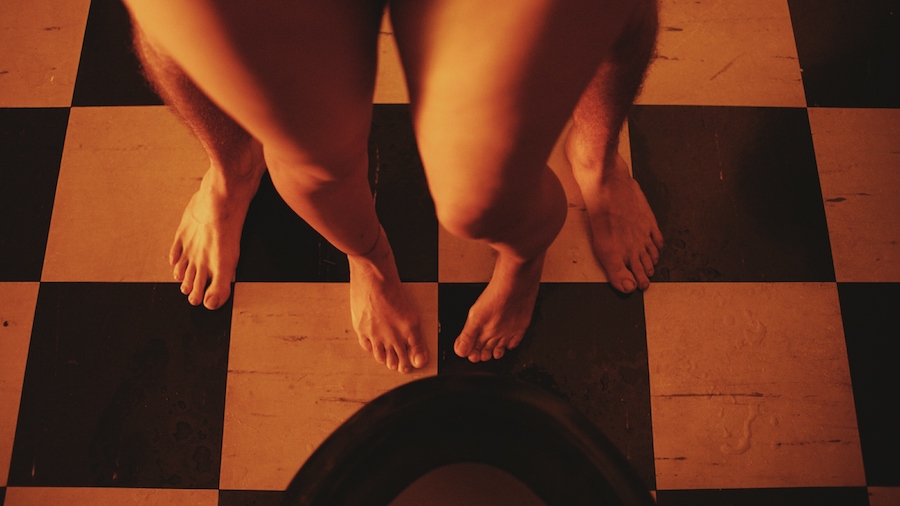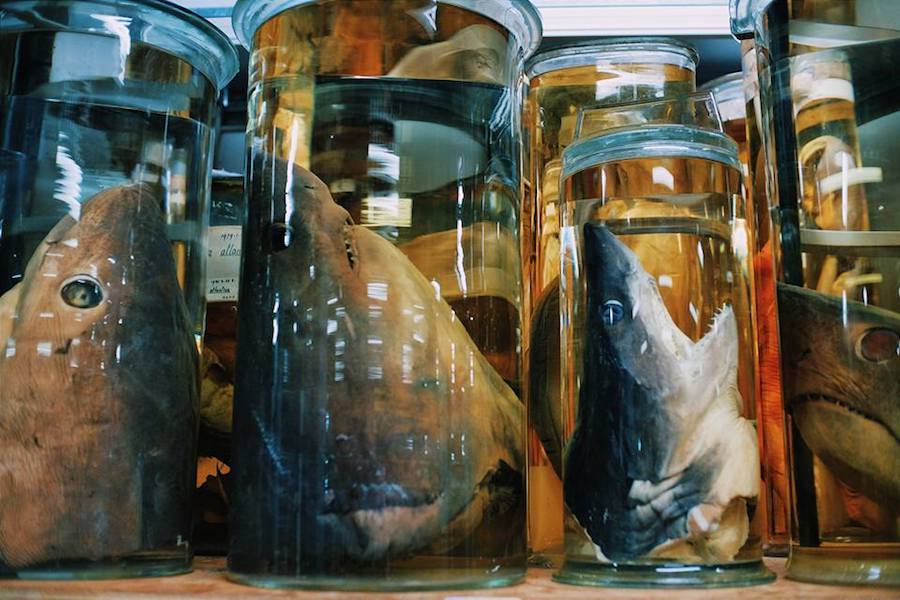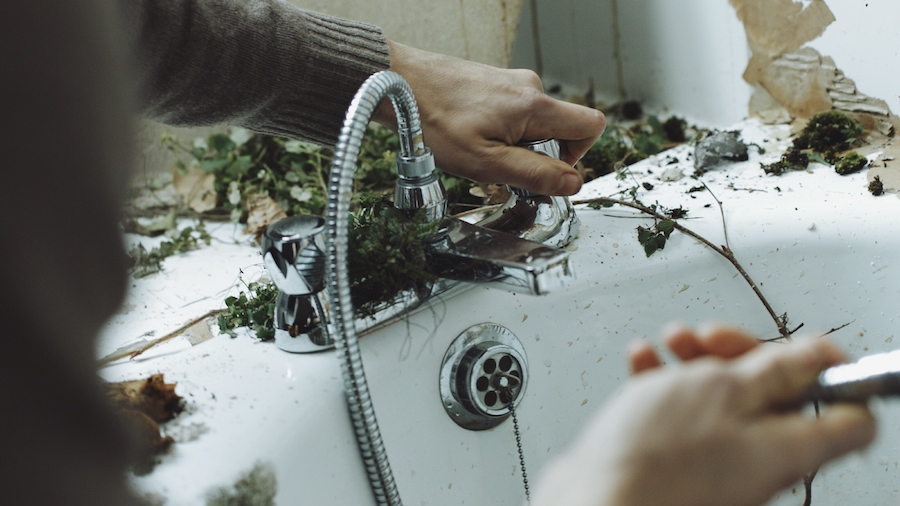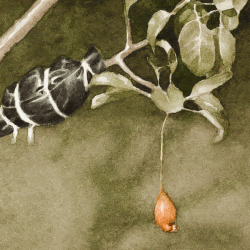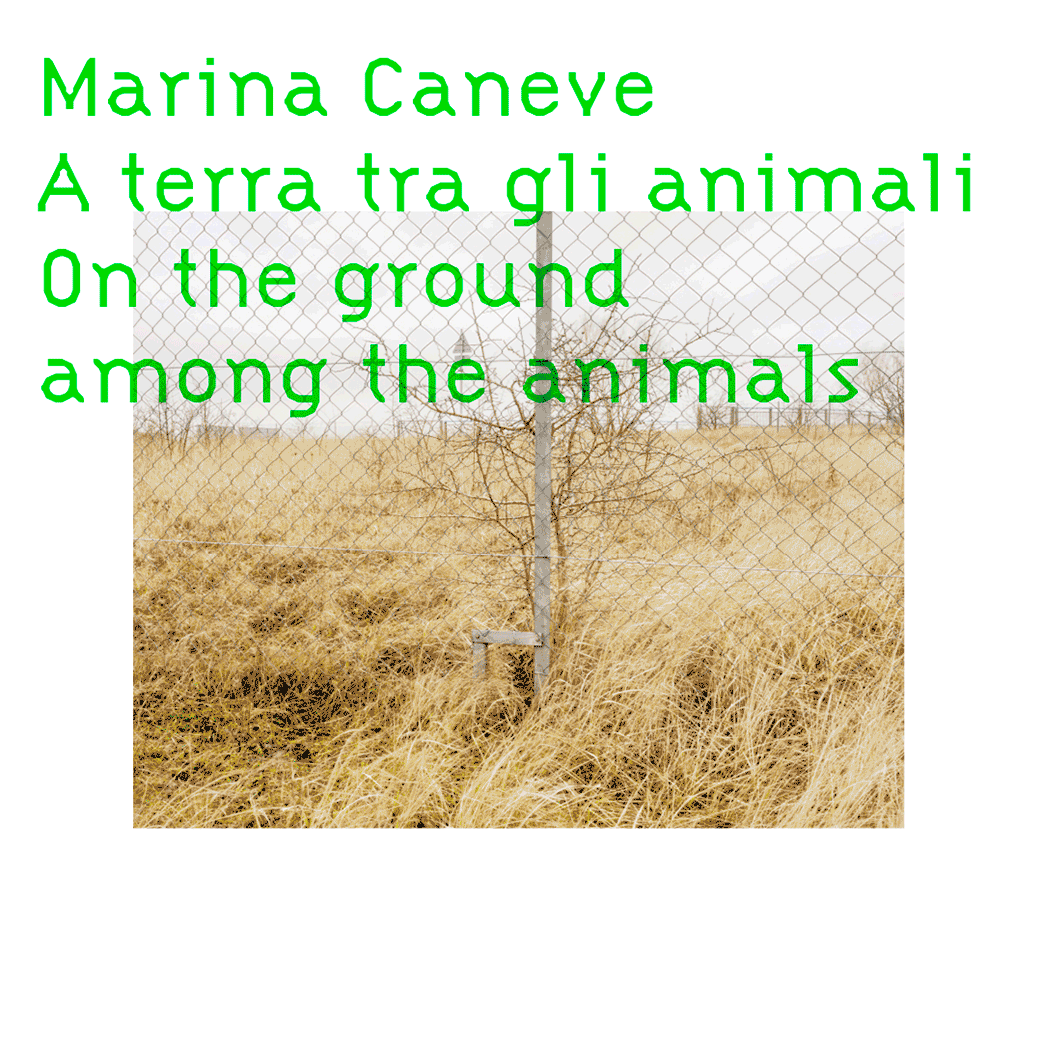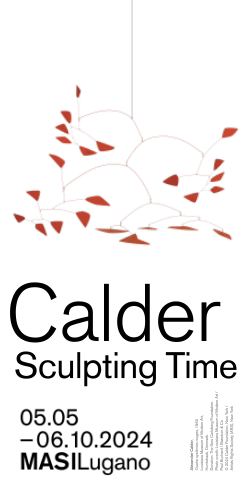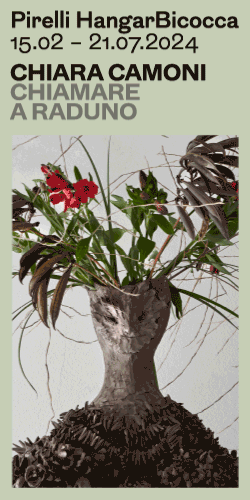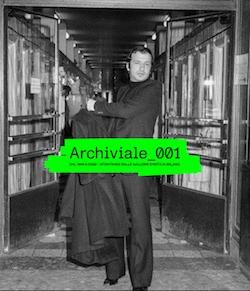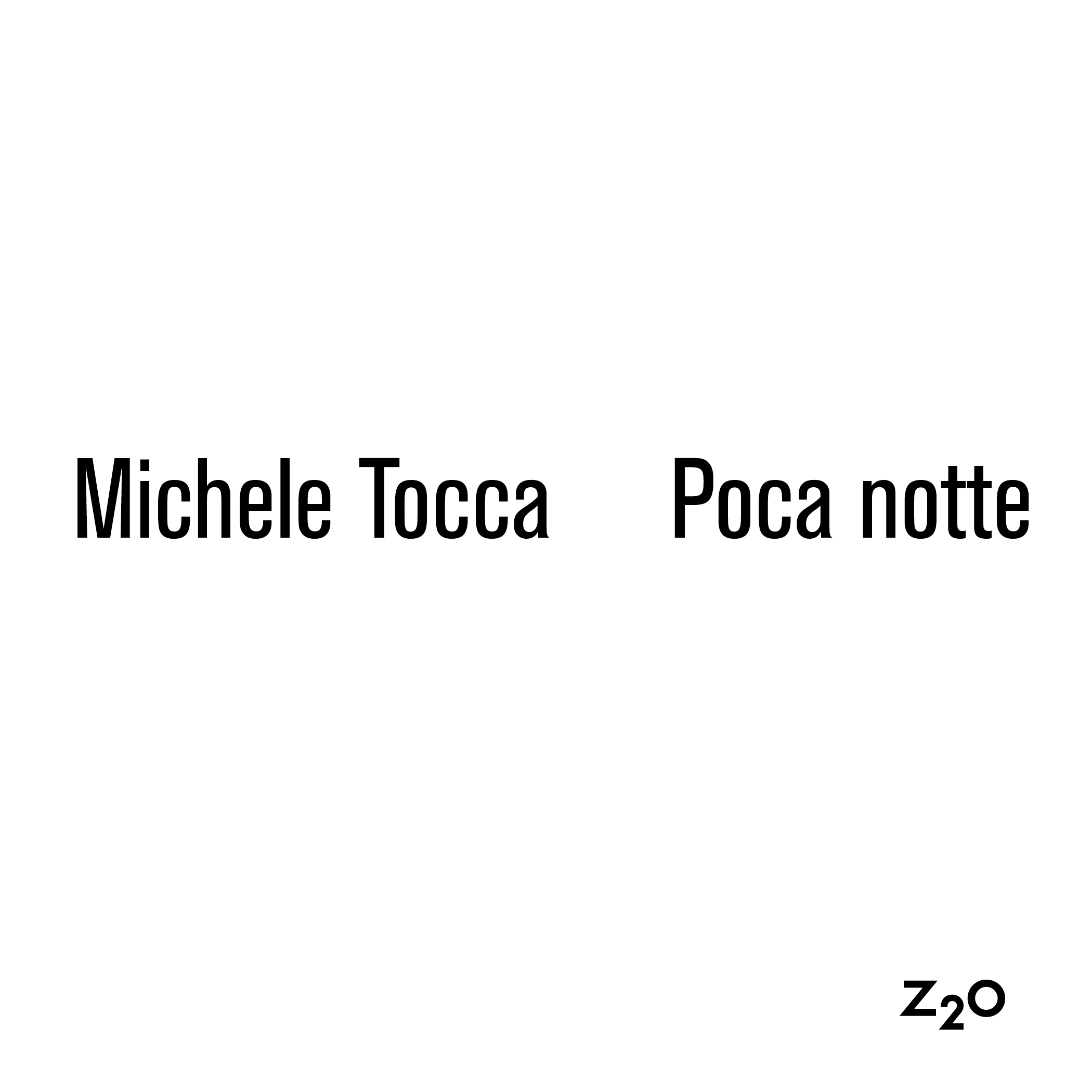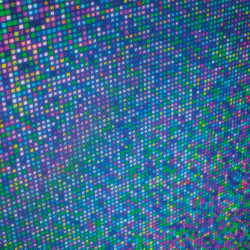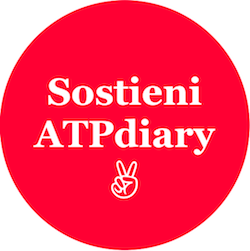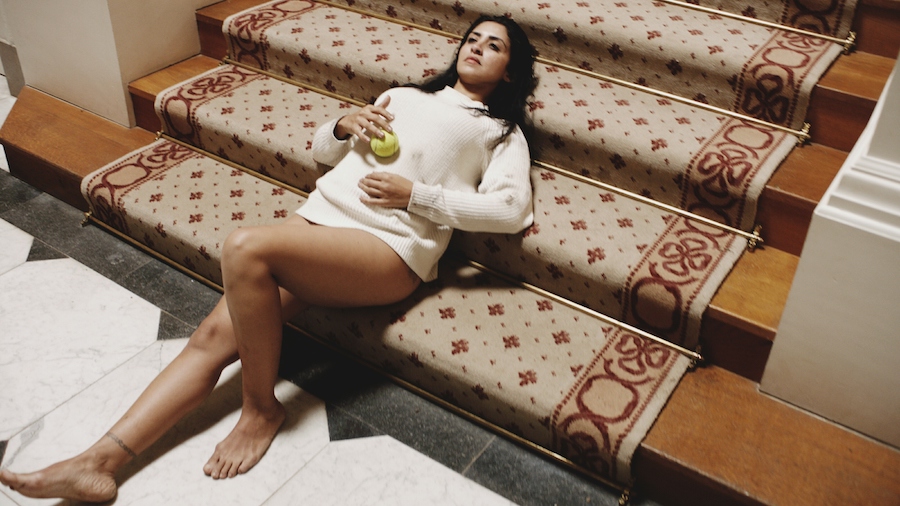
An exhibition of a new and ambitious body of work by artist Shezad Dawood opens across two sites in Venice to coincide with the 57th Art Biennale. The show marks the launch of Leviathan, a ten-part film cycle conceived and directed by Dawood that will unfold over the next three years.
The first two episodes of the film are presented alongside a new series of textile and sculptural works in the newly-restored Palazzina Canonica, the former headquarters of the Institute of Marine Sciences in Venice, which is opening to the public for the first time since the 1970’s. The two-part exhibition also features a site-specific intervention in the historic Fortuny factory on the island of Giudecca.
Curated by Alfredo Cramerotti, Leviathan is presented by the Fondazione Querini Stampalia in collaboration with the Institute of Marine Sciences (CNR-ISMAR) and Fortuny. Following the launch in Venice, the project will embark on a three-year UK and international tour, culminating in a nal presentation of all ten episodes in 2020.
ATPdiary has interviewed the artist and the curator of the exhibition.
ATP: During the exhibition in Venice you will present the first two of a total of ten episodes of the film Leviathan. How was the idea for the project born?
Shezad Dawood: I began by trying to write a longer theoretical text on the subject of democracy, that became so splintered and fragmented that it was bordering on schizophrenia. I had also separately begun researching the connections between Marine Ecosystems and Migrant crossings, and was surprised to find the links were more palpable than one might have anticipated: particular flash-points for climate change in the Mediterranean for example featured a displacement of waters creating particularly dangerous currents and eddies in exactly the same locations that were seeing the greatest traffic of migrating people.
When migrant rights activists and oceanographers began telling me about resulting trauma in both displaced people and coastal communities, I realised there was a further connection to our collective mental health, and that perhaps both ideas I was pursuing were really one larger idea referring to our global ecosystem. So I began writing ten episodes for ten different (international) locations, each narrated by a different survivor of a species-wide cataclysm caused by us not responding in time to these interconnected fault-lines.
ATP: The filming locations include the oceanographic platform of the institute of Marine Sciences in the Adriatic sea, the Natural History Museum and an abandoned island in the Venetian lagoon. What made you choose these locations?
SD: I was looking for locations that had a very particular resonance both for the project and aesthetically able to communicate an end-of-the-world scenario. Luckily enough, the Insitute of Marine Sciences became an early collaborating partner on the project and have really helped inform the project, by generously sharing their research. This enabled me to make a project for Venice that felt properly responsive to Venice as a site for research. And also gave access to the remarkable location of the Aqua Alta platform in the Adriatic Sea, and to the building in which the exhibition will be housed, which is the former headquarters of the Institute. We even shot inside the old derelict laboratories!
The episodes chart a ‘reverse’ path of migration, and so begin in London where I am based and move on to the South coast of England, France, Italy and eventually I hope to North Africa. The marine labs in the back of the Natural History Museum contain a preserved giant squid, amongst other samples dating back to Darwin’s journey on the Beagle, and I liked this contrast between primal oceans and rationalism that confront each other there.
And finally the lagoon which appears at the end of Epsiode 2 and will be developed further on Epsiode 3 (which will be added to the exhibition on the 1st September), has such a rich history from the beginnings of the Republic to the present day, as a meeting-point for east-and-west that it seemed a useful fulcrum for the project’s opening trilogy.
ATP: Could you briefly tell me about your collaboration with the Labanof?
SD: I had read about the Labanof’s work and was very interested in what Cristina Catteneo was doing. And this idea of a visual archive that could track missing persons, seemed a vital response to the key question of our times: what can each of us do? Alfredo eventually managed to get in touch with Cristina and we went to Milan to meet with her and discuss our respective projects and how we might collaborate. Cristina began sharing images and later accompanying captions from the archive, for me to process and respond to. The idea became to create a smaller-scale mirror to their much larger archive, through a series of paintings depicting the objects they have recovered at sea from individual migrants trying and failing in the most tragic circumstances to make the Lampedusa crossing.
As their archive becomes a way for families to track missing relatives and draw more attention to the ongoing tragedy and loss of life of migrating peoples in the Mediterranean, I wished in ten to draw more attention to the work they were doing. And Cristina (along with many others who have informed my research) will be speaking as part of the public programme that will run May 11-14th at the exhibtion venue. Please visit: www.leviathan-cycle.com for more detailed information on speakers and timings.
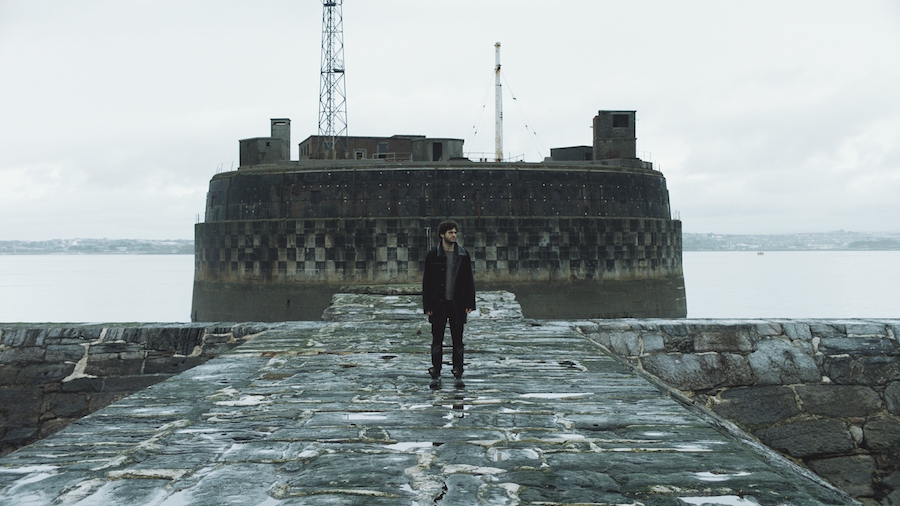
ATP: In the film Shezad Dawood analyses the idea of trauma linked to the humanitarian and environmental risks of our times. Can you elaborate on this aspect?
Alfredo Cramerotti: Leviathan focuses on issues like migration, marine welfare and mental health. Although not immediately apparent, these three aspects of our contemporary society are closely interlinked. Precisely because contemporary art is about the life we live now, without being bound to any specific discipline or angle, it is one of the most suitable ways we have to unpack specific relations.
We can imagine, if not touch, the level of trauma experienced by the migrants crossing the sea and their close relatives who stay behind, or their wider family networks. Labanof is a forensic anthropology laboratory part of the University of Milan, a small research unit that works to develop an international protocol to deal with the victims of the crossings at sea, and with their families. They work in Lampedusa, in Pantelleria, and other locations where the migrants reach (or attempt to reach) the coast, the EU border. The scientists are there to identify, mainly through personal effects, the bodies of those who didn’t make it, in order to inform their families back home. These series of procedures were non-existent before their work started a few years ago: international protocols exist to deal with victims of war, or natural disasters; but because crossing the sea is voluntarily, there is no international agreement on this and each nation deals with the aftermath of shipwrecks or sinking in their own separate way. Labanof basically attempts to limit or reduce the trauma by allowing their families to mourn their losses. It’s true that life continues after all, but if we are not able to mourn, and (slowly) heal, the trauma continues indefinitely.
The particularity of Leviathan is that it uncovers how humanitarian issues, physical and physiological trauma and the marine ecosystem are linked. Many scientific and research organisations such as Labanof and the Institute of Marine Sciences CNR-ISMAR in Venice happen to be working on the same areas – both physically and metaphorically – often without realising it. A project like Leviathan helps to connect the dots, and allow them to speak to each other, exchanging important information, research and data in order to advance their respective work – it happened during the preparation phase of Shezad’s project and will happen again with the public programme at Palazzina Canonica.
ATP: Alongside the film, there will be other works on textile and sculptures. How did they come about and how did you imagine them in the context of the neo-Renaissance architecture of the Palazzina Canonica?
AC: As mentioned by Shezad, at the Natural History Museum in London, where one of the episodes was shot, there is a preserved giant squid dating back to Darwin’s journey on the Beagle. This proved a catalyst for other connections to be made – combining the rational approach to “progress” science and knowledge and the chaotic, primal “feeling” of the open and undiscovered ocean. The same unsettling relationship is found in the textile paintings that combine the beautiful and luxury samples of Fortuny – the only survival industry in Venice – with the personal effects collected by the Labanof scientists of those who disappeared or perished at sea – the surviving items of each precious life, and equally precious hopes. They include mundane objects such as lighters, jumpers and mobile phones; but also passports, medications and children school reports. It is difficult not to feel emotional sometimes; and we should let ourselves.
The architectural, textile, film and sculptural elements of Leviathan address the aesthetics, as well as the ethics, of this idea of passage, discovery, peril and risk in light of a better future. They question both the journey and the goal, not one or the other. Does a means justify an end? Although we may ethically be troubled by this question, often we accept this compromise in order to live. The education of children, for instance, is one basic example of this compromise. I believe the project in the context of Palazzina Canonica brings this ethical and aesthetic issue to the fore.
ATP: A large neon work titled “Island Pattern” will also go on display. Could you tell me a bit about this title?
AC: The Institute of Marine Sciences and the Fortuny factory have been working with Shezad for a over a year, and in the course of this collaboration striking “overlaps” in terms of research, interests, topics and results occurred. Art, science and trade really informed each other in this sense. One of the senior scientists of CNR-ISMAR, Angela Pomaro, specialises in the wave pattern of the Venetian lagoon as a way to understand changes of the seabed and its undercurrents; at the same time, Pietro Lunetta, the former Fortuny Chief Designer, has designed a collection of textile based precisely on the patterns of the lagoon at different times of day and night. They were both studying the same phenomenon albeit for different purposes.
They realised it only when Leviathan put them together. It’s only one of the examples of a combination of serendipity, conscious and unconscious alignments that happened during the preparation of the project. The title of the neon work, which aptly is installed in the garden of the Fortuny factory in Giudecca, it’s about this “overlap”.
The whole approach by Shezad is very place-responsive about Venice, and it will be place-responsive about each location in which Leviathan will take place on an European scale. Each iteration of the project will have new elements that are drawn, produced and delivered in close response and dialogue with the local features and particularities of the environment. Leviathan is global in scope as it deals with issues such as migration, the environment and our mental and physical capacity to cope with it, but also maintains a strong local purpose in each of the contexts in which it happens.
